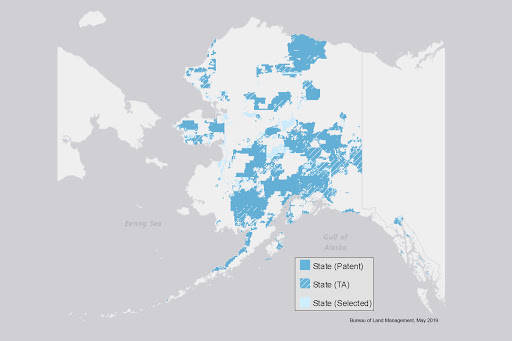Alaska’s elected officials are making a strong push for the federal government to turn over hundreds of thousands of acres to the University of Alaska for economic development, but the exact location of that land is still being determined.
Alaska’s congressional delegation submitted bills on April 15 that would establish a program within the U.S. Department of the Interior to fulfill the state’s land grant obligation. The act would establish the university as a land grant university, “with holdings sufficient to facilitate operation and maintenance of a university system for the State of Alaska.”
That means the university is looking for land to develop for economic use, said Ed Fogels, a private consultant hired by the state to help select the land. Fogels, a former deputy commissioner of the Alaska Department of Natural Resources, told the Empire in an interview that his team has identified 250,000 potential acres for university development, but the process for obtaining the land was a lengthy one.
The university is still owed roughly 360,000 acres promised to it before statehood, according to UA’s Land Grant website. UA owns about 150,700 acres, the website says, 12,000 of which has been designated educational properties like the university campuses themselves and research stations. Since 1987, UA’s land and resource sales have generated $211 million, according to UA.
[University of Alaska looks to a post-pandemic future]
Money generated by the land currently goes into a fund managed by the school’s investment arm, the University of Alaska Foundation, which runs initiatives such as the Alaska Scholars Program, which provides scholarship money to Alaska students.
We don’t have specific lands that we can show the public yet, we’re still trying to work toward that,” Fogels said. “It’s a slow iterative process.”
Fogels said he and his team review state land records and identify land that could potentially be developed for an economic purpose. In Alaska, that typically means resource development. Land selected by Fogels and his team are submitted to DNR, he said, which reviews them and determines if that land has an overwhelming public value.
The primary reason (for the land grants) is to generate revenue,” Fogels said. “Revenues generated on these lands will go to the university.”
According to the UA Land Management report, lands owned by the university generated roughly $6.8 million in Fiscal Year 2020. Lands owned by UA are currently being used to harvest timber, gravel, coal and oil and gas, according to the report.
If the land is approved by DNR, it will have to be formally conveyed to the state by the Department of the Interior, Fogels said. The Alaska delegation’s bill would create a program to facilitate the transfer, and would give the state two years to identify lands to request.
The Alaska State Legislature recently passed a joint statement urging the Congressional delegation, the U.S. Department of the Interior and Gov. Mike Dunleavy to facilitate the transfer of the land. But this is not the first time this bill has been submitted to Congress. The bill submitted by the delegation in mid-April was a duplicate of legislation from past sessions.
The process is long, Fogels said, but the intent is to secure the economic viability of Alaska’s university and make the school less dependent on state revenue.
The university system has faced drastic budget cuts under Dunleavy’s administration, agreeing to reduce its overall budget by $70 million over three years before further losses were caused by the COVID-19 pandemic.
“This isn’t a get rich overnight effort, this is for the long term,” Fogels said. “We want a strong university system in this state. This will ensure the University of Alaska can do its job effectively for 10, 20, 30, 100 years.”
Contact reporter Peter Segall at psegall@juneauempire.com. Follow him on Twitter at @SegallJnuEmpire.

